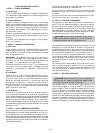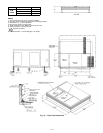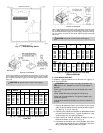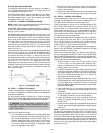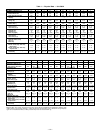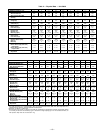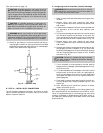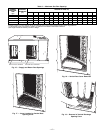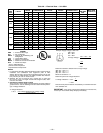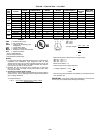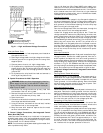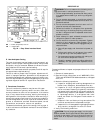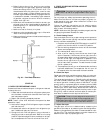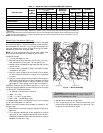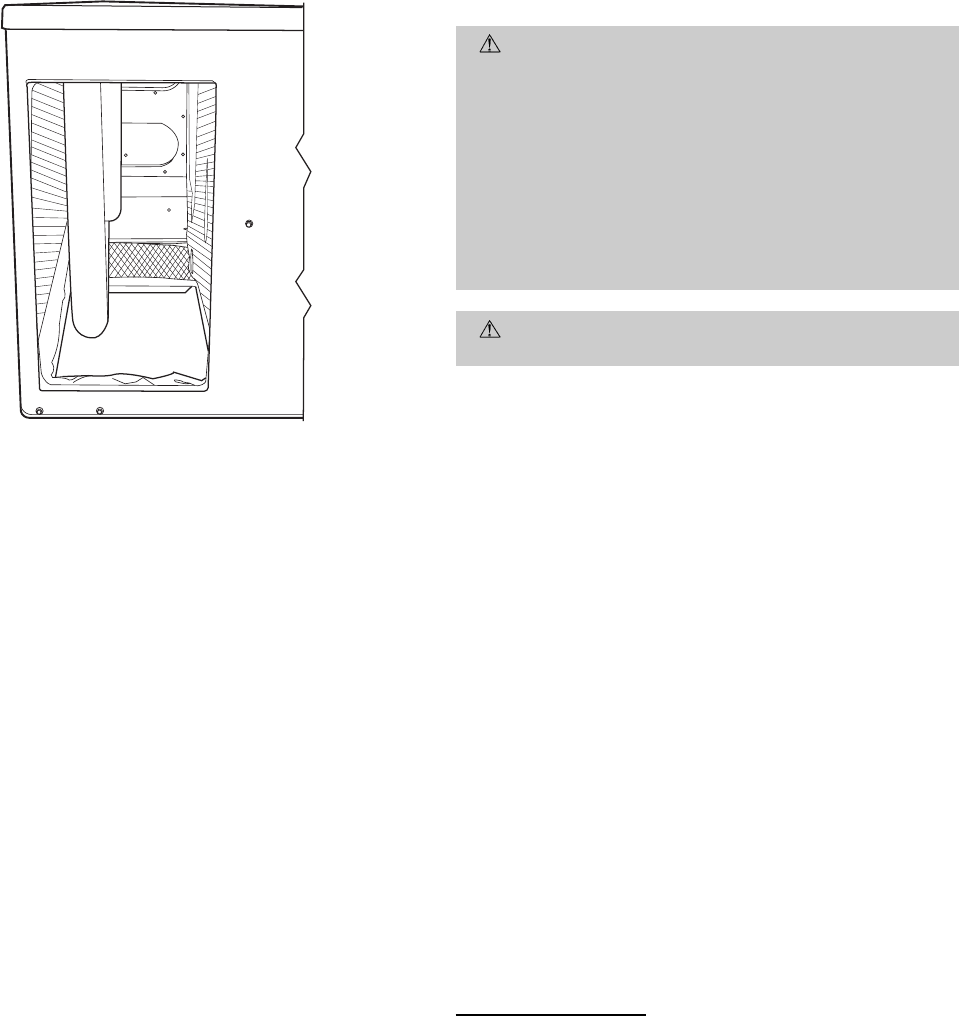
Adhere to the following criteria when selecting, sizing,
and installing the duct system:
1. Units are shipped with all 4 duct openings covered. Re-
move appropriate panels for intended installation.
2. Select and size ductwork, supply-air registers, and
return-air grilles according to American Society of
Heating, Refrigeration and Air Conditioning Engineers
(ASHRAE) recommendations.
3. Use flexible transition between rigid ductwork and unit
to prevent transmission of vibration. The transition may
be screwed or bolted to duct flanges. Use suitable gas-
kets to ensure weathertight and airtight seal.
4. All units must have field-supplied filters or accessory fil-
ter rack installed in the return-air side of the unit. Rec-
ommended sizes for filters are shown in Tables 1 and 2.
5. Size all ductwork for maximum required airflow (either
heating or cooling) for unit being installed.Avoid abrupt
duct size increases or decreases or performance may be
affected.
6. Adequately insulate and weatherproof all ductwork
located outdoors. Insulate ducts passing through uncon-
ditioned space, and use vapor barrier in accordance with
latest issue of Sheet Metal and Air Conditioning
Contractors NationalAssociation (SMACNA) andAir Con-
ditioning Contractors of America (ACCA) minimum in-
stallation standards for heating and air conditioning
systems. Secure all ducts to building structure.
7. Flash, weatherproof, and vibration-isolate all openings
in building structure in accordance with local codes and
good building practices.
X. STEP 10 — INSTALL ELECTRICAL CONNECTIONS
WARNING:
The unit cabinet must have an uninter-
rupted, unbroken electrical ground to minimize the pos-
sibility of personal injury if an electrical fault should
occur. This ground may consist of an electrical wire con-
nected to the unit ground lug in the control compart-
ment, or conduit approved for electrical ground when
installed in accordance with NEC (National Electrical
Code) ANSI/NFPA (latest edition) (in Canada, Cana-
dian Electrical Code CSA [Canadian Standards Asso-
ciation] C22.1) and local electrical codes. Do not use gas
piping as an electrical ground. Failure to adhere to this
warning could result in personal injury or death.
CAUTION:
Failure to follow these precautions could
result in damage to the unit being installed:
1. Make all electrical connections in accordance with NEC
ANSI/NFPA(latest edition) and local electrical codes gov-
erning such wiring. In Canada, all electrical connec-
tions must be in accordance with CSA standard C22.1
Canadian Electrical Code Part1 and applicable local codes.
Refer to unit wiring diagram.
2. Use only copper conductor for connections between field-
supplied electrical disconnect switch and unit. DO NOT
USE ALUMINUM WIRE.
3. Be sure that high-voltage power to unit is within oper-
ating voltage range indicated on unit rating plate.
4. Do not damage internal components whendrilling through
any panel to mount electrical hardware, conduit, etc. On
3-phase units, ensure phases are balanced within 2%.
Consult local power company for correction of improper
voltage and/or phase imbalance.
A. High-Voltage Connections
The unit must have a separate electrical service with a field-
supplied, waterproof, disconnect switch mounted at, or within
sight from, the unit. Refer to the unit rating plate for maxi-
mum fuse/circuit breaker size and minimum circuit amps (am-
pacity) for wire sizing. See Tables 4A and 4B for electrical
data.
The field-supplied disconnect switch box may be mounted on
the unit over the high-voltage inlet hole when the
standard power and low-voltage entry points are used. See
Fig. 2-9 for acceptable location.
Standard Power Entry
Proceed as follows to complete the high-voltage connections
to the unit:
1. Connect ground lead to chassis ground connection when
using separate ground wire.
2. Run high-voltage leads into unit control box.
3. Locate black and yellow wires connected to line side of
contactor.
4. Cut wires at partition where they exit control box.
5. Strip back leads and connect to high voltage leads. On
3-phase units, blue wire is provided stripped back and
ready to connect to high voltage lead. See unit wiring
label and Fig. 21.
Fig. 20 — Vertical Discharge Cover Removed
—18—



